It looks like you're using an Ad Blocker.
Please white-list or disable AboveTopSecret.com in your ad-blocking tool.
Thank you.
Some features of ATS will be disabled while you continue to use an ad-blocker.
5
share:
Hi All,
I came accross this article and thought...." OMG, has it been this long already, I remember when Cell phone were first available to the public in the 80s, you had to have a lotta $$ to own one. And storage space..lol.
I have found a great collection of pictures of older models just as a refresher for those of us that might have forgotten what these devices used to look like, I willl only post a few pictures but feel free to scroll down the list here

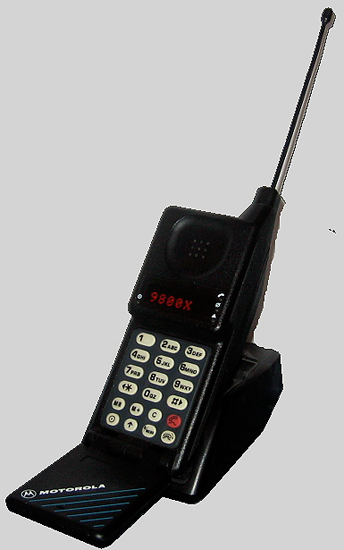
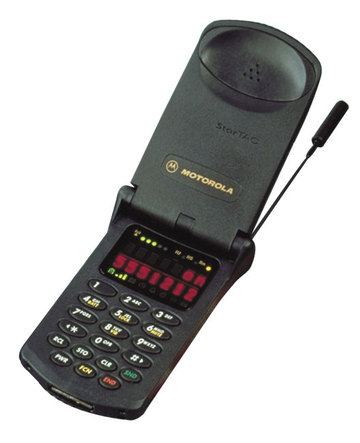
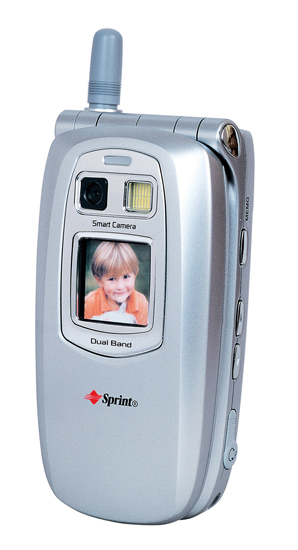
And then we get to what we are all likely familar with, the good 'ol I Phone.
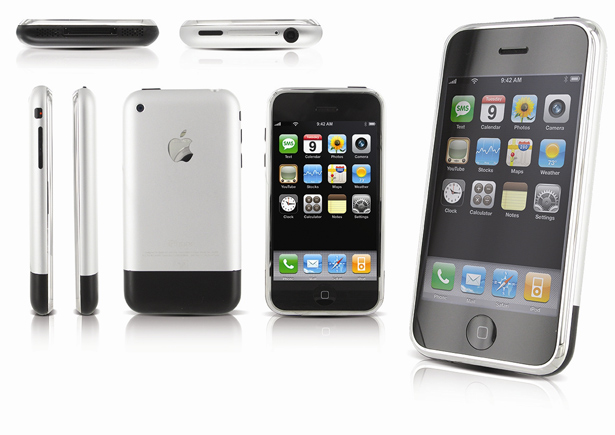
Now I know that there are 5ish? newer models of iphones But I didn't see the point of posting a picture of each one.
I will stop here and if you all are interested, please follow the links for many many more models that were released over the years. I think that we can all agree that we have come a long way from those huge bulky devices.
Now my question to the ATS community is: What will be next?
I am thinking something along the line of an implant (the closest we have now I THINK is the bluetooth, I say this because of its size)...but this could very well be many years ahead of us.
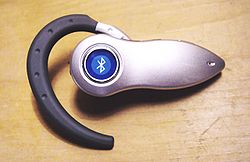
I came accross this article and thought...." OMG, has it been this long already, I remember when Cell phone were first available to the public in the 80s, you had to have a lotta $$ to own one. And storage space..lol.
Forty years ago today, Motorola engineer Martin Cooper — credited as the inventor of the cellphone — made the world's first public call from a mobile phone, choosing to get in touch with his rival in the race to create the device.
Cooper made the call on a New York City street in front of reporters from a device weighing about 1½ kilograms. Motorola spent almost $1 million producing the phone, Cooper later told the BBC. Cost of the phone for a consumer — when it became available 10 years later — would have been equal to almost $9,970 in today's currency.
I have found a great collection of pictures of older models just as a refresher for those of us that might have forgotten what these devices used to look like, I willl only post a few pictures but feel free to scroll down the list here
1983Motorola DynaTAC 8000XAnalog Motorola DynaTAC 8000X Advanced Mobile Phone System mobile phone as of 1983.

1989Motorola MicroTAC 9800XThe first truly portable phone. Up until its release, most cellular phones were installed as car phones due to the inability to fit them into a jacket pocket.

1996Motorola StarTACThe first clamshell cellular phone. Also one of the first display screens featured on a cell.

2002 Sanyo SCP-5300The first camera phone. Despite the low quality images it produced, it was the first.

And then we get to what we are all likely familar with, the good 'ol I Phone.
2007iPhoneThe original iPhone was released in June 2007 with an auto-rotate sensor, a multi-touch sensor that allowed multiple inputs while ignoring minor touches, a touch interface that replaced the traditional QWERTY keyboards, and many other features that helped to give Apple an almost instant healthy market share on its release.

Now I know that there are 5ish? newer models of iphones But I didn't see the point of posting a picture of each one.
I will stop here and if you all are interested, please follow the links for many many more models that were released over the years. I think that we can all agree that we have come a long way from those huge bulky devices.
Now my question to the ATS community is: What will be next?
I am thinking something along the line of an implant (the closest we have now I THINK is the bluetooth, I say this because of its size)...but this could very well be many years ahead of us.

edit on 5-4-2013 by Teye22 because: (no reason given)
S&F for posting on ATS. I was reading about it on the 3rd of April and posted on my FB as it was the 40th year since Hand Held mobile devices were
made available to the public and actual call was made on that date. Truely one of the significant discoveries of our times in addition to TV,
Internet etc. However the true date goes back to 1906.
LINK
Inventor Charles E. Alden claimed, in the 29 April 1906 issue of the New York World, to have invented a device called the “vest pocket telephone" although Alden never had the chance to produce this device in large quantities.
The first mobile telephone calls were made from cars in 1946. Bell System's Mobile Telephone Service was made on 17 June in St. Louis, Missouri, followed by Illinois Bell Telephone Company's car radiotelephone service in Chicago on 2 October. The MTA phones were composed of vacuum tubes and relays, and weighed over 80 pounds (36 kg). There were initially only 3 channels for all the users in the metropolitan area, increasing later to 32 channels across 3 bands. This service continued into the 1980s in large portions of North America. Due to the small number of radio frequencies available, the service quickly reached capacity. In 1956, the world’s first partly automatic car phone system, Mobile System A (MTA), was introduced in Sweden.
John F. Mitchell, Motorola's chief of portable communication products in 1973, played a key role in advancing the development of handheld mobile telephone equipment. Mitchell successfully pushed Motorola to develop wireless communication products that would be small enough to use anywhere and participated in the design of the cellular phone. Martin Cooper, a Motorola researcher and executive, was the key researcher on Mitchell's team that developed the first hand-held mobile telephone for use on a cellular network. Using a somewhat heavy portable handset, Cooper made the first call on a handheld mobile phone on 3 April 1973 to his rival, Dr. Joel S. Engel of Bell Labs.
As I walked down the street while talking on the phone, sophisticated New Yorkers gaped at the sight of someone actually moving around while making a phone call. Remember that in 1973, there weren't cordless telephones or cellular phones. I made numerous calls, including one where I crossed the street while talking to a New York radio reporter - probably one of the more dangerous things I have ever done in my life. - Martin Cooper
The new invention sold for $3,995 and weighed two pounds, leading to the nickname "the brick".
The world's first commercial automated cellular network was launched in Japan by NTT in 1979, initially in the metropolitan area of Tokyo. In 1981, this was followed by the simultaneous launch of the Nordic Mobile Telephone (NMT) system in Denmark, Finland, Norway and Sweden. Several countries then followed in the early-to-mid 1980s including the UK, Mexico and Canada.
On 6 March 1983, the DynaTAc mobile phone launched on the first US 1G network by Ameritech. It cost $100m to develop, and took over a decade to hit the market. The phone had a talk time of just half an hour and took ten hours to charge. Consumer demand was strong despite the battery life, weight, and low talk time, and waiting lists were in the thousands.
In 1991, the second generation (2G) cellular technology was launched in Finland by Radiolinja on the GSM standard, which sparked competition in the sector as the new operators challenged the incumbent 1G network operators.
Ten years later, in 2001, the third generation (3G) was launched in Japan by NTT DoCoMo on the WCDMA standard.[26] This was followed by 3.5G, 3G+ or turbo 3G enhancements based on the high-speed packet access (HSPA) family, allowing UMTS networks to have higher data transfer speeds and capacity.
By 2009, it had become clear that, at some point, 3G networks would be overwhelmed by the growth of bandwidth-intensive applications like streaming media.[27] Consequently, the industry began looking to data-optimized 4th-generation technologies, with the promise of speed improvements up to 10-fold over existing 3G technologies. The first two commercially available technologies billed as 4G were the WiMAX standard (offered in the U.S. by Sprint) and the LTE standard, first offered in Scandinavia by TeliaSonera.
LINK
edit on 5-4-2013 by hp1229 because: (no reason given)
edit on
5-4-2013 by hp1229 because: (no reason given)
Oh you should have kept going..
Here's my phone. The Galaxy Note 2
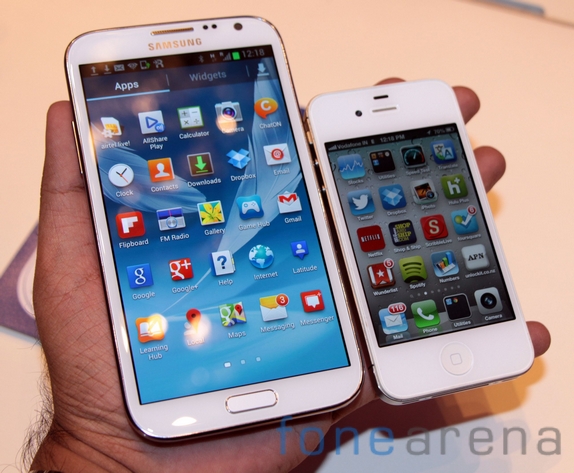
Here's my phone. The Galaxy Note 2

One thing I've noticed is that they were saying that we use mobiles so much now, how did we ever get by before?
I thought "We used phone boxes." but can't remember the last time I saw one..
I thought "We used phone boxes." but can't remember the last time I saw one..
Originally posted by winofiend
One thing I've noticed is that they were saying that we use mobiles so much now, how did we ever get by before?
I thought "We used phone boxes." but can't remember the last time I saw one..
Actually someone at my work asked me in a conversation "are phone boxes still around?"
And I said "Yes. Open your eyes. There's 3 just over the road from us, you walk past them on the way from the train station, and another one at the side of the building next to the cafe where you regularly go to each lunch."
reply to post by hp1229
Thank for contributing to the thread hp1229. Much appreciated. I find it kinda funny that the article would not mention these as being older. Still great info nonetheless......having a 2 pound phone on your shoulder for 30 minutes would contribute to a nice neck strain though...lol
Thank for contributing to the thread hp1229. Much appreciated. I find it kinda funny that the article would not mention these as being older. Still great info nonetheless......having a 2 pound phone on your shoulder for 30 minutes would contribute to a nice neck strain though...lol
double post sorry
edit on 5-4-2013 by Teye22 because: (no reason given)
reply to post by DaRAGE
The Galaxy Note is also a very nice recent model, Sorry I stopped before I got to yours.
Mine is an antique in comparisson...I dont have a smart phone, I used to own a Blackberry and went back to simple mobile after. Monthly rates was the reason at the time.
14 months to go on my plan and I will likely go for the iphone.......we'll see.
The Galaxy Note is also a very nice recent model, Sorry I stopped before I got to yours.
Mine is an antique in comparisson...I dont have a smart phone, I used to own a Blackberry and went back to simple mobile after. Monthly rates was the reason at the time.
14 months to go on my plan and I will likely go for the iphone.......we'll see.
Originally posted by DaRAGE
Originally posted by winofiend
One thing I've noticed is that they were saying that we use mobiles so much now, how did we ever get by before?
I thought "We used phone boxes." but can't remember the last time I saw one..
Actually someone at my work asked me in a conversation "are phone boxes still around?"
And I said "Yes. Open your eyes. There's 3 just over the road from us, you walk past them on the way from the train station, and another one at the side of the building next to the cafe where you regularly go to each lunch."
I think the reason is that communicating is sooo easy now with texting, tweets, etc that we stopped noticing these things. Now that I think of it, I don't recall the last I have seen one either. We could walk right into one and wouldn't notice.
edit on 5-4-2013 by Teye22 because: (no
reason given)
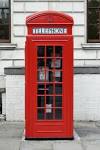
edit on 5-4-2013 by Teye22 because: (no reason given)
nice. I have owned all those phones. I still have a MR30 in a draw somewhere
I could never work out if the aerial on the startac actually did anything or it was there just for show. It didnt seem to be connected to anything.
I could never work out if the aerial on the startac actually did anything or it was there just for show. It didnt seem to be connected to anything.
edit on 5-4-2013 by PhoenixOD because: (no reason given)
reply to post by PhoenixOD
The StarTAC. Haven't seen that in a few days.
I remember the old, first phones. Only businesses could really afford them.
The bag phone was the big thing right before the "pocket phones" came out (the only pockets they fit in were on Girbaud jeans, with their HUGE pockets).
The StarTAC. Haven't seen that in a few days.
I remember the old, first phones. Only businesses could really afford them.
The bag phone was the big thing right before the "pocket phones" came out (the only pockets they fit in were on Girbaud jeans, with their HUGE pockets).
new topics
-
Weinstein's conviction overturned
Mainstream News: 30 minutes ago -
Supreme Court Oral Arguments 4.25.2024 - Are PRESIDENTS IMMUNE From Later Being Prosecuted.
Above Politics: 1 hours ago -
Krystalnacht on today's most elite Universities?
Social Issues and Civil Unrest: 2 hours ago -
Chris Christie Wishes Death Upon Trump and Ramaswamy
Politicians & People: 2 hours ago -
University of Texas Instantly Shuts Down Anti Israel Protests
Education and Media: 4 hours ago -
Any one suspicious of fever promotions events, major investor Goldman Sachs card only.
The Gray Area: 6 hours ago -
God's Righteousness is Greater than Our Wrath
Religion, Faith, And Theology: 11 hours ago
top topics
-
VP's Secret Service agent brawls with other agents at Andrews
Mainstream News: 15 hours ago, 11 flags -
Nearly 70% Of Americans Want Talks To End War In Ukraine
Political Issues: 16 hours ago, 6 flags -
Sunak spinning the sickness figures
Other Current Events: 16 hours ago, 5 flags -
Supreme Court Oral Arguments 4.25.2024 - Are PRESIDENTS IMMUNE From Later Being Prosecuted.
Above Politics: 1 hours ago, 5 flags -
Krystalnacht on today's most elite Universities?
Social Issues and Civil Unrest: 2 hours ago, 5 flags -
Weinstein's conviction overturned
Mainstream News: 30 minutes ago, 4 flags -
Electrical tricks for saving money
Education and Media: 14 hours ago, 4 flags -
University of Texas Instantly Shuts Down Anti Israel Protests
Education and Media: 4 hours ago, 2 flags -
Any one suspicious of fever promotions events, major investor Goldman Sachs card only.
The Gray Area: 6 hours ago, 2 flags -
Chris Christie Wishes Death Upon Trump and Ramaswamy
Politicians & People: 2 hours ago, 1 flags
active topics
-
Nearly 70% Of Americans Want Talks To End War In Ukraine
Political Issues • 77 • : Consvoli -
British TV Presenter Refuses To Use Guest's Preferred Pronouns
Education and Media • 159 • : 5thHead -
Supreme Court Oral Arguments 4.25.2024 - Are PRESIDENTS IMMUNE From Later Being Prosecuted.
Above Politics • 12 • : xuenchen -
University of Texas Instantly Shuts Down Anti Israel Protests
Education and Media • 98 • : Vermilion -
-@TH3WH17ERABB17- -Q- ---TIME TO SHOW THE WORLD--- -Part- --44--
Dissecting Disinformation • 669 • : Justoneman -
HORRIBLE !! Russian Soldier Drinking Own Urine To Survive In Battle
World War Three • 40 • : Myhandle -
Weinstein's conviction overturned
Mainstream News • 7 • : underpass61 -
President BIDEN Vows to Make Americans Pay More Federal Taxes in 2025 - Political Suicide.
2024 Elections • 144 • : underpass61 -
Sunak spinning the sickness figures
Other Current Events • 19 • : Freeborn -
Candidate TRUMP Now Has Crazy Judge JUAN MERCHAN After Him - The Stormy Daniels Hush-Money Case.
Political Conspiracies • 746 • : matafuchs
5
